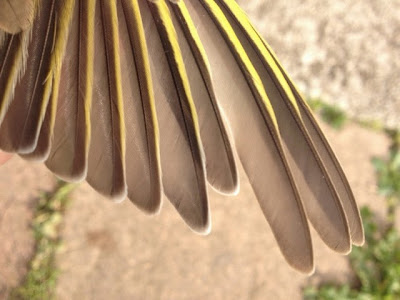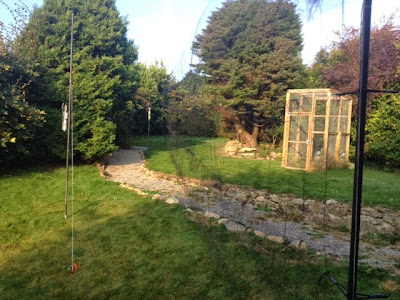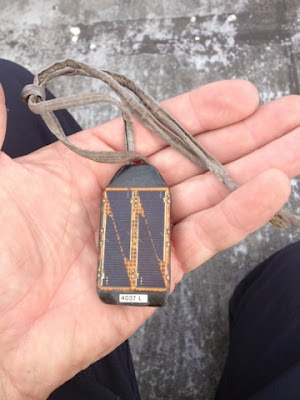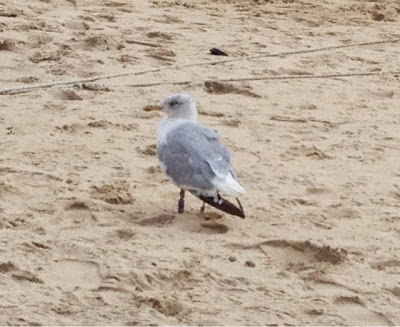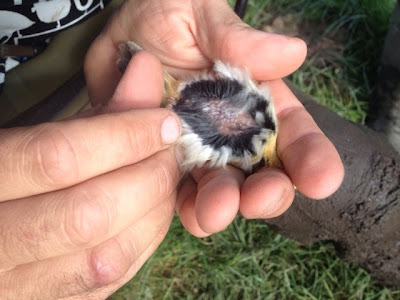Well having spent the morning trying to get to grips (not literally) with an incredibly elusive Arctic Warbler in Church Cove, Lizard, I've been playing catch-up for the remainder of the day! The warbler was found by group ringer Tony Blunden first thing and despite being heard calling a few times has eluded most people. A really dull Wood Warbler hanging around the churchyard has also added to the confusion at times...
But anyway, in more important ringing group news (and to explain the random begging dragon above!), one of our ringing group members will this weekend be doing something quite stupid and
needs your help... Luke Edwyn Marsh, from Falmouth Marine School (who fund a lot of our seabird work), will this Sunday be leaping out of a perfectly fine aircraft at 15,000 feet (yes, 2.84 miles!!) as part of a big fundraising day for
Pete's Dragons.
 |
| Luke (right) in his more natural habitat: ringing gull chicks on Mullion Island |
The dragons fundraise for two charities:
The Samaritans and
Cornwall Search and Rescue Team, the latter obviously very important to me as a SAR team member! But Luke ('Enter the Dragon') is still a bit short of the funding he needs to do the jump, so what better way to use the power of the ringing group blog than to try to add a few pounds (or hundreds of pounds??!!) to his pot for these worthy causes.
 |
Members of Cornwall Search and Rescue Team steep slope
rescue training earlier in the year; a vital technical skill |
So if you'd like to read a bit more about Luke, then he's 'dragon of the day' today so check him out on the
Dragon's website, and to donate click the dragon below! If
just 20% of the readers of our recent Paddyfield post felt inclined to
donate just £2.84 (miles to pennies...), then we'd add a whopping £354 to Luke's pot! So if you can spare a pint's worth of cash, then please donate away...





